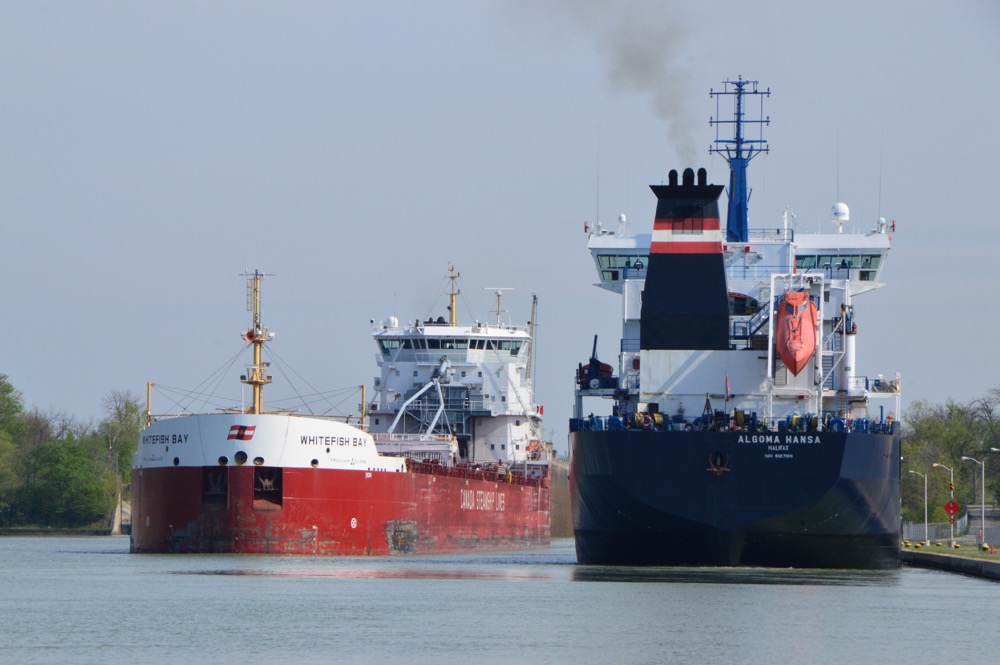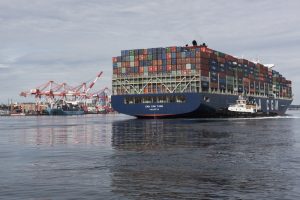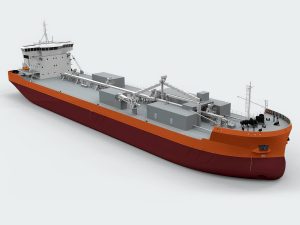Cargo shipments through the Great Lakes – St. Lawrence Seaway System continue to bounce back from a slow start, creating optimism for the second half of the 2022 shipping season.
Overall cargo tonnage shipments (from March 22 to July 31) via the St. Lawrence Seaway totaled 15.7 million metric tons, still down 7.65% compared to 2021, but continuing to close the gap in comparison to April and May.
“We certainly see things heading in the right direction as we near the mid-point of the shipping season,” said Terence Bowles, President and CEO of the St. Lawrence Seaway Management Corporation. “Indications are that the Canadian grain crops in both Western Canada and Ontario are very strong, so we’re expecting a big push in grain for the rest of the year. There has also been a good increase in liquid bulk shipments and construction materials remain strong.”
Highlights for Seaway tonnage up to the end of July included a 268% increase in potash shipments from Western Canada; a 50% increase in shipments of refined Canadian petroleum products destined for Ontario, Quebec and Eastern Canada; and a 11% rise in road salt shipments.
At Port Windsor, July cargo tonnage stats provided further indication that the port has bounced back from the late start to the 2022 shipping season.
“Despite low yields from the west, Ontario farmers have delivered, and grain shipments are exceeding last year, up 3.17% at the end of July,” said Steve Salmons, President and CEO of Port Windsor. “We’re also seeing Windsor Salt back to full production from their new seam, with production up 14% so far this year. Meanwhile, general cargo, including steel, is lagging as the Russian invasion of Ukraine continues to disrupt the usual European imports through the Black Sea.”
Mr. Salmons adds that the response to passenger traffic has been incredibly strong at Port Windsor as people return to local touring and Great lakes cruises.
July also saw a unique shipment by Picton Terminals’ Amy Lynn D tug, which joined an innovative environmental project and towed a 2600m pipe from Hamilton to Toronto Island for the Deep Lake Water Cooling (DLWC) expansion project. Enwave’s Deep Lake Water Cooling system harnesses the cold temperature at the bottom of Lake Ontario to cool hospitals, data centers, educational campuses, government buildings, commercial and residential buildings. This is the world’s largest lake water cooling system.
Pipe assembly took several days (the pipe floats during its journey to Toronto and once connected, is filled with Lake water and sinks to the bottom of Lake Ontario). ALD joined the skilled fleets of Toronto Drydock (Coastal Titan, Tugs Radium Yellowknife, Omni Coastal), Dean Construction (tugs and workboats Annie M. Dean, Barbie Dean, Americo) and the HM7 work barge.
Hamilton Oshawa Port Authority (HOPA) also revealed further details of its $30 million Port of Oshawa expansion plan, which will receive $14 million from the Federal Government’s National Trade Corridors Fund. HOPA will invest $16-million. The project will extend the marine infrastructure in Oshawa to accommodate two docked vessels, improve loading and un-loading times and expand storage capacity with the addition of a new grain silo, as well as upgrading roads and improving stormwater management.
“At a time when concerns remain over the resilience of the supply chain and the need to quickly, efficiently and safely get goods to market, this is welcome support,” says Ian Hamilton, HOPA President and Chief Executive Officer.
“A strong Port of Oshawa is important to help grow industry across Durham Region and will be particularly important for farmers in the area. We are grateful for the support of Transport Canada and the collaboration of our local stakeholders to bring these planned improvements to fruition.”





